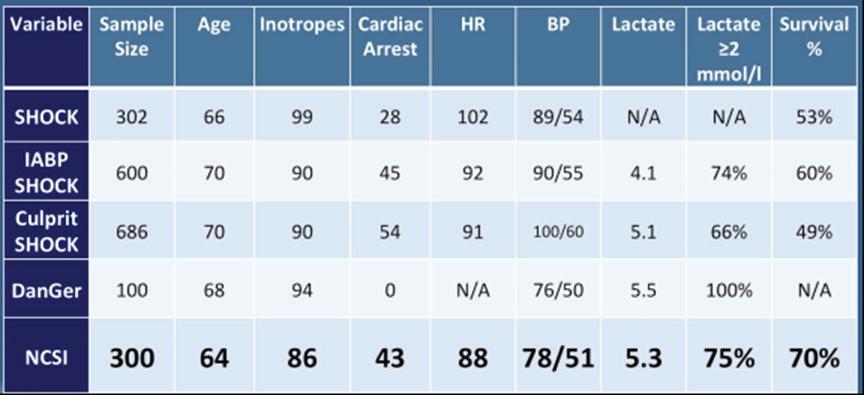
4 minute read
A New Strategy for the Treatment of Patients with Type 1 Cardiorenal Syndrome with Impella
extracorporeal membrane oxygenation (ECMO) pump demonstrated that use of ECMO was associated with increased infarct size and did not provide mitochondrial structural protection prior to reperfusion.17 This suggests that transvalvular unloading with Impella protects mitochondrial function in acute MI, whereas VA-ECMO does not. Unpublished data from Dr Kapur’s laboratory, in collaboration with Dr Divaka Perrara, also suggest that VA-ECMO decreases coronary blood flow and increases myocardial oxygen consumption, resulting in increased infarct size, vascular pressure, vascular injury and poor myocardial recovery.
Dr Kapur’s laboratory will continue to advance the field of mechanical circulatory support and LV unloading as a vital approach to prevent ischaemia–reperfusion injury. At the forefront of these efforts is the STEMI-DTU pivotal trial, a landmark study to further understand the benefits of transvalvular unloading in patients with acute MI.
Advertisement
1. Ali D, Banerjee P. Inpatient monitoring of decompensated heart failure: what is needed? Curr
Heart Fail Rep 2017;14:393–7. https://doi.org/10.1007/s11897-017-0352-x; PMID: 28803272. 2. Kilgore M, Patel HK, Kielhorn A, et al. Economic burden of hospitalizations of Medicare beneficiaries with heart failure. Risk Manag Healthc Policy 2017;10:63–70. https://doi.org/10.2147/
RMHP.S130341; PMID: 28546776. 3. Agarwal SK, Wruck L, Quibrera M, et al. Temporal trends in hospitalizations for acute decompensated heart failure in the United States, 1998–2011. Am J Epidemiol 2016;183:462–70. https://doi.org/10.1093/aje/kwv455; PMID: 26895710. 4. Heidenreich PA, Albert NM, Allen LA, et al. Forecasting the impact of heart failure in the United
States: a policy statement from the American Heart Association. Circ Heart Fail 2013;6:606–19. https://doi.org/10.1161/HHF.0b013e318291329a; PMID: 23616602. 5. O’Conner CM. High heart failure readmission rates: is it the health system’s fault? JACC: Heart
Fail 2017;5:393. https://doi.org/10.1016/j.jchf.2017.03.011; PMID: 28449800. 6. Mayr FB, Talisa VB, Balakumar V, et al. Proportion and cost of unplanned 30-day readmissions after sepsis compared with other medical conditions. JAMA 2017;317:530–1. https://doi. org/10.1001/jama.2016.20468; PMID: 28114505. 7. Stone GW, Selker HP, Thiele H, et al. Relationship between infarct size and outcomes following primary PCI: patient-level analysis from 10 randomized trials. J Am Coll Cardiol 2016;67:1674–83. https://doi.org/10.1016/j.jacc.2016.01.069; PMID: 27056772. 8. De Luca G, Suryapranata H, Ottervanger JP, Antman EA. Time delay to treatment and mortality in primary angioplasty for acute myocardial infarction: every minute of delay counts. Circulation 2004;109:1223–5. https://doi.org/10.1161/01.CIR.0000121424.76486.20; PMID: 15007008. 9. Tarantini G, Cacciavillani L, Corbetti F, et al. Duration of ischemia is a major determinant of transmurality and severe microvascular obstruction after primary angioplasty: a study performed with contrast-enhanced magnetic resonance. J Am Coll Cardiol 2005;46:1229–35. https://doi.org/10.1016/j.jacc.2005.06.054; PMID: 16198836. 10. Yellon DM, Hausenloy DJ. Myocardial reperfusion injury. N Engl J Med 2007;357:1121–35. https:// doi.org/10.1056/NEJMra071667; PMID: 17855673. 11. Fröhlich GM, Meier P, White SK, et al. Myocardial reperfusion injury: looking beyond primary PCI. Eur Heart J 2013;34:1714–22. https://doi.org/10.1093/eurheartj/eht090;
PMID: 23536610. 12. Kapur NK, Karas RH. A new shield from the double-edged sword of reperfusion in STEMI. Eur
Heart J 2015;36:3058–60. https://doi.org/10.1093/eurheartj/ehv438; PMID: 26351396. 13. Curran J, Burkhoff, D, Kloner RA. Beyond reperfusion: acute ventricular unloading and cardioprotection during myocardial infarction. J Cardiovasc Transl Res 2019;12:95–106. http://doi.org/10.1007/s12265-019-9863-z; PMID: 30671717. 14. Esposito ML, Zhang Y, Qiao X, et al. Left ventricular unloading before reperfusion promotes functional recovery after acute myocardial infarction. J Am Coll Cardiol 2018;72:501–14. https://doi.org/10.1016/j.jacc.2018.05.034; PMID: 30049311. 15. Miyashita S, Kariya T, Yamada KP, et al. Left ventricular assist devices for acute myocardial infarct size reduction: meta-analysis. J Cardiovasc Transl Res 2020. https://doi.org/10.1007/ s12265-020-10068-7; PMID: 32860130; epub ahead of press. 16. Kapur NK, Alkhouli MA, DeMartini TJ, et al. Unloading the left ventricle before reperfusion in patients with anterior ST-segment–elevation myocardial infarction. Circulation 2018;139:337–46. https://doi.org/10.1161/CIRCULATIONAHA.118.038269; PMID: 30586728. 17. Swain L, Reyelt L, Bhave S, et al. Transvalvular ventricular unloading before reperfusion in acute myocardial infarction. J Am Coll Cardiol 2020;76:684–99. https://doi.org/10.1016/j. jacc.2020.06.031; PMID: 32762903. 18. Briceno N, Annamalai SK, Reyelt L, et al. Left ventricular unloading increases the coronary collateral flow index before reperfusion and reduces infarct size in a swine model of acute myocardial infarction. J Am Heart Assoc 2019;8:e013586. https://doi.org/10.1161/JAHA.119.013586;
PMID: 31698989.
Presented by Mark Anderson, MD, MHA, FACS
Hackensack Meridian School of Medicine, Nutley, NJ, US
Dr Mark Anderson is Chief of the Department of Cardiac Surgery at the Hackensack University Medical Center and Professor of Surgery at the Hackensack Meridian School of Medicine.
Dr Anderson began his talk by defining cardiorenal syndrome (CRS) as a pathophysiological disorder of the heart and kidney, whereby acute or chronic dysfunction of one organ may induce acute or chronic dysfunction in the other. The focus of his study was CRS-1, cardiorenal syndrome characterised by rapid worsening of cardiac function, such as acute decompensation of heart failure, leading to acute renal injury.1 A feedback loop of neurohormonal and molecular signalling ensues between the kidney and heart, further promoting organ damage. The rate of decline in renal function predicts mortality in these patients, even after adjusting for baseline kidney function. The current standard of care for acute decompensated heart failure (ADHF) is a loop diuretic. If the loop diuretic is not effective in removing excess fluid volume, it is followed by or combined with additional diuretics, vasoactives, ultrafiltration and ultimately renal replacement therapy (RRT). Heart failure patients with CRS who are on RRT have poorer outcomes, as they are often declined for advanced therapies, such as a left ventricular assist device (LVAD).
Dr Anderson’s research hypothesis is that cardiac unloading with an Impella transvalvular mechanical support device in CRS-1 patients can have a favourable impact on neurohormonal activation and haemodynamics to mitigate the need for RRT. Potential benefits of Impella support include increasing cardiac output and haemodynamic stability, decreased neural sympathetic drive, renal unloading (resulting in decreased central venous pressure [CVP]), decreased renin–angiotensin–aldosterone system activation and decreased inflammatory response.
A retrospective chart review of 13 CRS-1 patients diagnosed with ADHF and acute kidney injury, who received the Impella 5.0 or Impella 5.5 device prior





